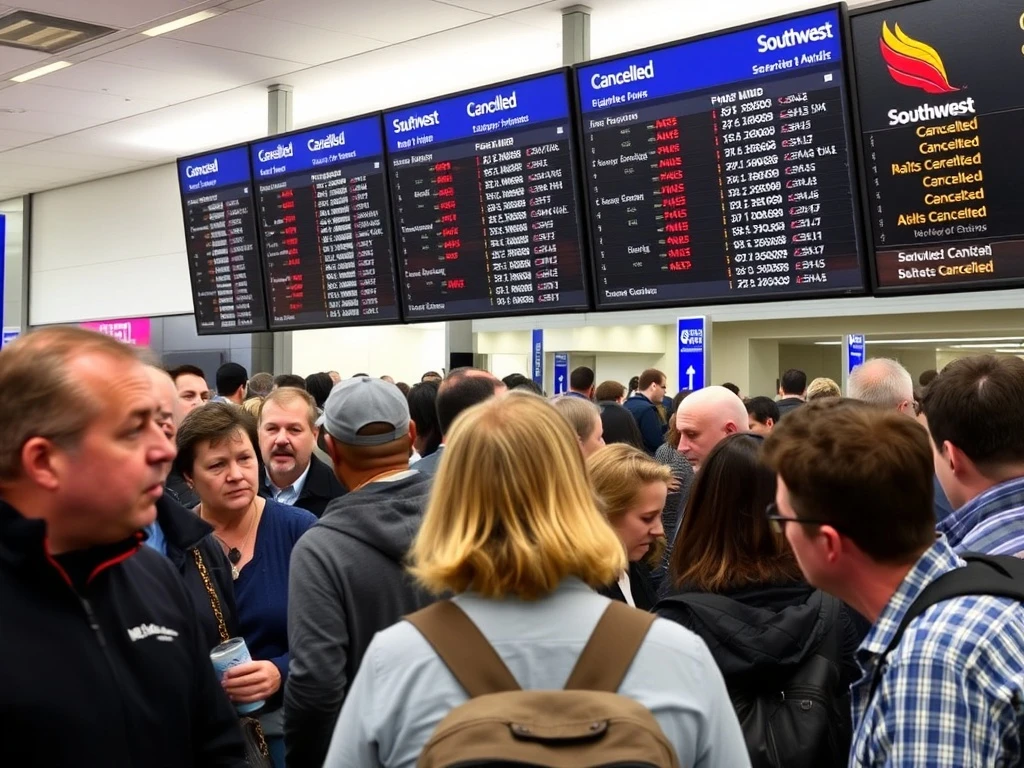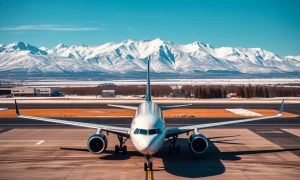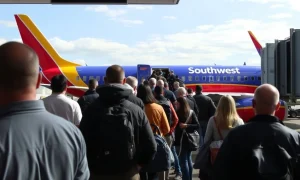The recent **Southwest Airlines cancellations** sent ripples of disruption across the travel industry. Hundreds of thousands of travelers faced unexpected hurdles. This event serves as a critical case study for businesses. It highlights the fragile nature of operational resilience. Moreover, it underscores the profound impact of supply chain disruptions on customer trust. Entrepreneurs and business leaders can learn valuable lessons. Understanding such large-scale service failures is essential.
Unpacking the Scale of Southwest Airlines Cancellations
The sheer volume of disrupted flights was staggering. Southwest Airlines, a major U.S. carrier, experienced an operational meltdown. This crisis led to thousands of canceled flights. Consequently, an estimated 860,000 flyers found their plans abruptly halted. Many travelers were stranded in airports. Others faced significant delays. The problem escalated quickly during a peak travel period. This magnified the widespread frustration. Furthermore, the cancellations stretched over several days. This extended the chaos for countless passengers.
Reports detailed the extent of the disruption. On one particular day, Southwest canceled over 70% of its scheduled flights. This figure far surpassed other airlines. The impact spread across the entire network. Major hubs like Denver, Chicago Midway, and Baltimore saw immense backlogs. Passengers often waited for hours. They struggled to find alternative arrangements. The situation created a domino effect. It affected not only individual travel plans but also broader economic activities.
This event highlighted several vulnerabilities. It showed the interconnectedness of modern travel. A single airline’s failure can impact an entire system. Therefore, understanding the root causes is crucial. It helps prevent similar incidents. The **Southwest Airlines cancellations** became a national conversation. People questioned the airline’s preparedness. They also asked about its recovery capabilities.
The Perfect Storm: Unraveling the Causes Behind Southwest Airlines Cancellations
The massive **Southwest Airlines cancellations** did not stem from a single issue. Instead, a combination of factors created a ‘perfect storm.’ Firstly, severe winter weather played a significant role. Blizzards and freezing temperatures swept across large parts of the United States. This weather forced ground stops and flight diversions. It disrupted initial flight schedules. However, other airlines recovered more quickly. Southwest’s issues persisted for much longer.
Secondly, Southwest’s outdated internal systems exacerbated the problem. The airline reportedly uses point-to-point routing. This differs from the hub-and-spoke model used by many competitors. While efficient in normal times, this system became a liability during disruptions. Crew members and aircraft were quickly displaced. The airline’s scheduling software struggled to reassign them. Manual processes became necessary. This slowed recovery efforts considerably.
Thirdly, crew scheduling proved to be a major bottleneck. Pilots and flight attendants found themselves out of position. They could not reach their next assignments. The technology used to connect crews with their next flights failed. This left many crews stranded. Consequently, flights lacked necessary personnel. This directly led to more cancellations. The system could not quickly adapt. Therefore, the problem spiraled out of control.
- Severe Weather: Initial disruptions from widespread winter storms.
- Outdated Systems: Legacy technology struggled with rapid re-scheduling.
- Crew Displacement: Pilots and flight attendants stranded, unable to reach flights.
- Point-to-Point Network: Less resilient to widespread disruptions than hub-and-spoke models.
Operational Failures Behind Southwest Airlines Cancellations
The operational failures extended beyond mere weather effects. Southwest’s core infrastructure showed significant weaknesses. Its crew management system, in particular, proved inadequate. This system is vital for assigning pilots and flight attendants to flights. When disruptions occurred, the system could not efficiently re-route crews. Instead, it relied on manual intervention. This process is inherently slow. It also becomes overwhelmed quickly.
Furthermore, communication breakdowns added to the chaos. Crew members often received conflicting information. They struggled to contact dispatchers. This lack of clear communication hampered recovery efforts. It created frustration among employees. Moreover, it directly impacted passengers. Many flights were ready for departure. Yet, they lacked a complete crew. This scenario played out repeatedly across the network.
The airline’s investment in technology also came under scrutiny. Critics argued that Southwest had not modernized its IT infrastructure sufficiently. Other airlines had upgraded their systems. They could handle disruptions more smoothly. Southwest’s reliance on older software became a critical point of failure. This technological deficit magnified the impact of the **Southwest Airlines cancellations**. It transformed a weather delay into a system-wide collapse. The airline later acknowledged these shortcomings. They pledged significant investments in technology upgrades.
The Human Cost: Impact on 860,000 Flyers
The Southwest Airlines cancellations caused immense personal hardship. Approximately 860,000 individuals saw their travel plans evaporate. Many were trying to reach family for holidays. Others missed important business meetings. Some faced significant financial losses. They paid for non-refundable hotels or events. The emotional toll was also substantial. Frustration and despair filled airport terminals.
Travelers reported long lines for customer service. Phone lines were often jammed. Southwest’s app and website also crashed frequently. This left passengers without information. They could not rebook flights easily. Many resorted to renting cars. Some even purchased expensive last-minute tickets on other airlines. These unexpected costs added to their burdens. The experience left a lasting negative impression on many customers.
Families were separated. Medical appointments were missed. Special occasions like weddings and funerals were impacted. The scale of human disruption was enormous. People shared their stories on social media. These accounts highlighted the severe inconvenience. They also showed the emotional distress. The widespread nature of the **Southwest Airlines cancellations** made it a shared national experience. It underscored the importance of reliable air travel for modern life.
Economic Fallout from Southwest Airlines Cancellations
The financial repercussions for Southwest Airlines were significant. The cancellations led to substantial revenue losses. Thousands of tickets were refunded. Many future bookings were also canceled. The airline incurred massive costs for passenger compensation. This included rebooking fees, meal vouchers, and hotel stays. Furthermore, overtime pay for employees surged. The total financial hit was estimated to be hundreds of millions of dollars.
The airline’s stock price also took a hit. Investors reacted negatively to the operational meltdown. Share values declined sharply. This reflected concerns about future profitability. It also showed worries about brand reputation. Analysts revised their outlooks for Southwest. They predicted a slower recovery. The incident highlighted the financial vulnerability of airlines. Operational efficiency directly impacts their bottom line.
Beyond Southwest, the broader travel industry felt ripples. Rental car companies saw increased demand. Other airlines experienced a surge in last-minute bookings. However, the overall economic impact was negative. Consumer confidence in air travel may have wavered. Businesses relying on air freight also faced delays. The **Southwest Airlines cancellations** served as a stark reminder. Disruptions can have far-reaching economic consequences. They affect more than just the immediate parties involved.
Navigating the Aftermath: Southwest’s Response and Recovery
Southwest Airlines quickly issued apologies. CEO Bob Jordan appeared in video messages. He expressed regret for the disruptions. The airline focused on rebooking affected passengers. They offered travel vouchers as compensation. They also covered expenses for meals and hotels. However, the sheer volume of claims overwhelmed their systems. Many passengers waited weeks for reimbursement.
The airline initiated an internal review. They aimed to understand the root causes fully. Furthermore, they announced plans for significant investments. These investments target technology upgrades. They also focus on improving operational resilience. Southwest committed to modernizing its crew scheduling software. They also pledged to enhance communication tools. The goal is to prevent similar incidents in the future. These measures are crucial for regaining public trust.
Southwest also faced scrutiny from regulators. The U.S. Department of Transportation (DOT) launched an investigation. They examined whether Southwest fulfilled its obligations to passengers. The airline cooperated with the inquiry. The recovery process was slow. However, Southwest worked to stabilize its operations. They prioritized restoring normal service. This effort aimed to mitigate long-term damage. The **Southwest Airlines cancellations** became a major test of the company’s crisis management capabilities.
Regulatory Scrutiny and Consumer Protection
The extensive **Southwest Airlines cancellations** attracted significant attention from government bodies. The U.S. Department of Transportation (DOT) quickly launched an investigation. They aimed to determine if Southwest violated consumer protection laws. Specifically, the DOT looked into whether the airline provided adequate refunds and compensation. They also examined the airline’s communication with passengers. This scrutiny is part of the DOT’s broader role. They ensure fair treatment for travelers.
Lawmakers also weighed in. Many called for stricter regulations on airlines. They advocated for enhanced passenger rights. Some proposed new rules regarding refunds for canceled flights. Others suggested mandating compensation for significant delays. The incident fueled public debate. It highlighted the need for greater accountability within the airline industry. Consumers expect reliable service. When disruptions occur, they expect fair recourse.
The investigation by the DOT could lead to penalties. Fines are possible if violations are found. This regulatory pressure serves as a deterrent. It encourages airlines to invest in robust systems. It also pushes them to prioritize operational readiness. The **Southwest Airlines cancellations** intensified the focus on consumer protection. It underscored the importance of government oversight in safeguarding traveler interests.
Rebuilding Trust After Southwest Airlines Cancellations
Rebuilding trust is a long and challenging process for any company. For Southwest Airlines, the task is monumental. The widespread cancellations severely damaged its reputation. Southwest had long prided itself on customer service. It was known for its friendly approach. The recent events challenged this image. Many loyal customers felt let down. They questioned the airline’s reliability.
The airline must demonstrate tangible improvements. Investing in new technology is a crucial step. Ensuring operational stability is another. Transparent communication about these efforts is also vital. Southwest needs to show that it has learned from its mistakes. It must prove that similar events will not happen again. Restoring confidence requires consistent, positive performance over time. This includes smooth operations during future peak travel periods.
Southwest’s marketing and public relations teams face a significant challenge. They must address lingering customer doubts. They need to reinforce the airline’s commitment to its passengers. The **Southwest Airlines cancellations** represent a major setback. However, a concerted effort can help restore faith. Focusing on improved customer experience will be key. This includes easier rebooking and faster compensation processes.
Lessons Learned from Southwest Airlines Cancellations
The widespread **Southwest Airlines cancellations** offer critical lessons for all businesses. Firstly, operational resilience is paramount. Companies must invest in robust systems. These systems should handle unexpected disruptions. Relying on outdated technology creates significant vulnerabilities. Secondly, effective crisis communication is essential. Clear, timely, and consistent information helps manage customer expectations. It also mitigates frustration.
Thirdly, employee support is crucial during crises. Displaced crews and overwhelmed staff need clear guidance. They require adequate resources. Their well-being directly impacts recovery efforts. Fourthly, customer trust is a fragile asset. It takes years to build but can be lost quickly. Companies must prioritize customer experience. They must also ensure fair treatment, especially during difficult times.
Finally, the incident highlights the importance of adaptability. Businesses must constantly review their processes. They need to update their infrastructure. This proactive approach prevents small problems from escalating. The **Southwest Airlines cancellations** serve as a sobering reminder. Even established companies can face severe challenges. Preparedness and continuous improvement are vital for long-term success. Every organization should analyze its own vulnerabilities. They should develop robust contingency plans.
The Path Forward: Modernization and Resilience
Southwest Airlines is now on a path towards significant modernization. The airline has publicly committed to upgrading its core systems. This includes substantial investment in new crew scheduling software. They also plan to enhance their operational tools. The goal is to improve the airline’s ability to recover from disruptions. These technological improvements are long overdue. They are essential for future stability.
Furthermore, Southwest is reviewing its operational protocols. They aim to build greater resilience into their network. This might involve adjustments to their point-to-point model. It could also mean better contingency planning for severe weather. The airline is working to prevent similar meltdowns. They are focusing on proactive measures. This includes better communication channels for crews. It also involves more efficient re-assignment processes.
The airline’s leadership understands the stakes. Their future success depends on regaining public confidence. It also hinges on preventing a repeat of the **Southwest Airlines cancellations**. The industry will watch closely. Other airlines can also learn from Southwest’s challenges. Investing in robust infrastructure is not merely an option. It is a fundamental necessity for reliable service. The path forward for Southwest involves continuous improvement. It demands a renewed focus on operational excellence.
The **Southwest Airlines cancellations** event remains a significant moment in recent aviation history. It highlighted the complexities of modern air travel. It also showed the profound impact when systems fail. While challenging, such events provide valuable lessons. They drive necessary changes within industries. Southwest Airlines faces a long journey. However, their commitment to modernization offers hope. It suggests a more resilient future for the airline and its passengers.
Frequently Asked Questions (FAQs)
What caused the extensive Southwest Airlines cancellations?
The cancellations resulted from a combination of severe winter weather, an outdated crew scheduling system, and Southwest’s unique point-to-point network which struggled to recover from widespread disruptions.
How many passengers were affected by the Southwest Airlines cancellations?
An estimated 860,000 flyers were affected by the thousands of flight cancellations and significant delays during the operational meltdown.
What compensation did Southwest Airlines offer to affected passengers?
Southwest offered refunds for canceled flights, travel vouchers for future flights, and reimbursement for expenses such as meals, hotels, and alternative transportation, though processing times varied.
Has Southwest Airlines improved its operations since the cancellations?
Yes, Southwest has publicly committed to significant investments in technology upgrades, particularly in its crew scheduling system, and is reviewing its operational protocols to enhance resilience and prevent future widespread disruptions.
What were the long-term impacts of the Southwest Airlines cancellations on the company?
The long-term impacts include substantial financial losses, damage to brand reputation and customer trust, and increased regulatory scrutiny, leading to a focus on significant operational and technological modernization.
What lessons can other businesses learn from the Southwest Airlines cancellations?
Businesses can learn the importance of robust operational resilience, effective crisis communication, supporting employees during disruptions, and continuously investing in modern infrastructure to maintain customer trust and prevent system-wide failures.




















